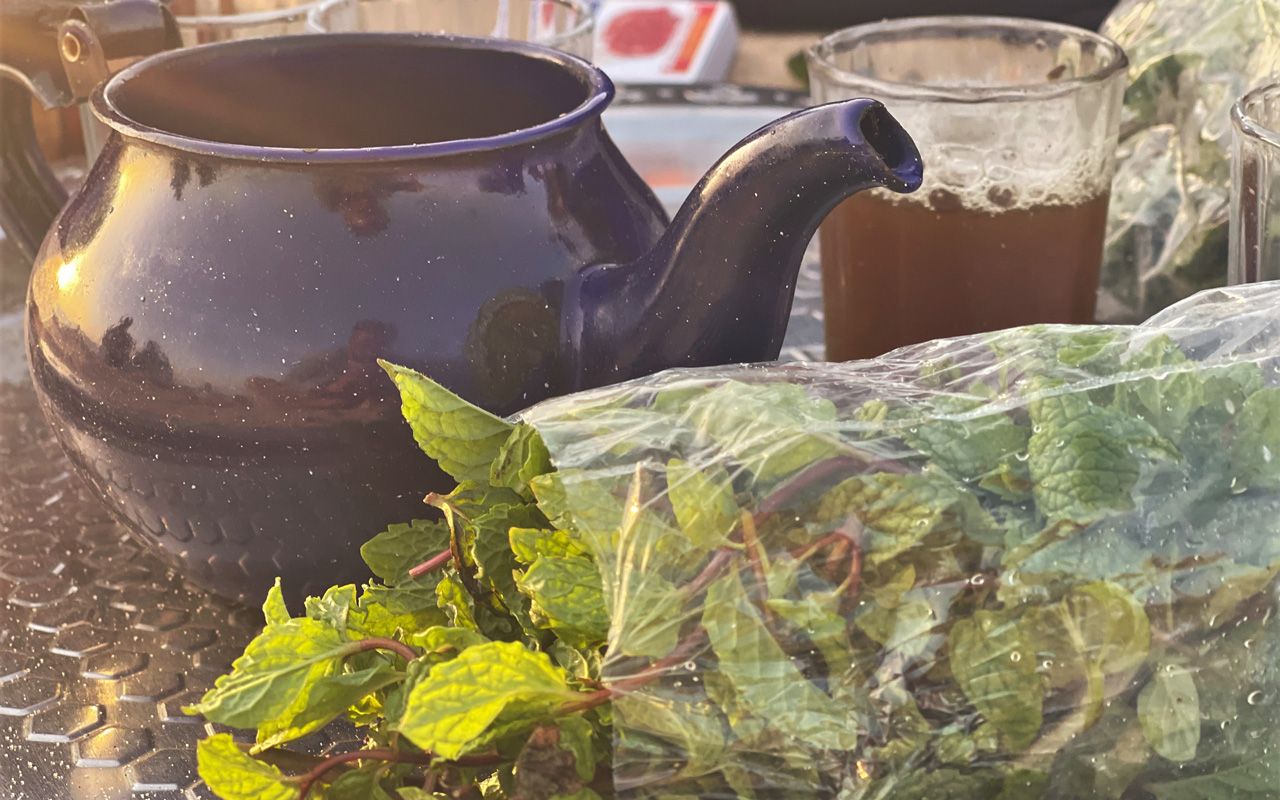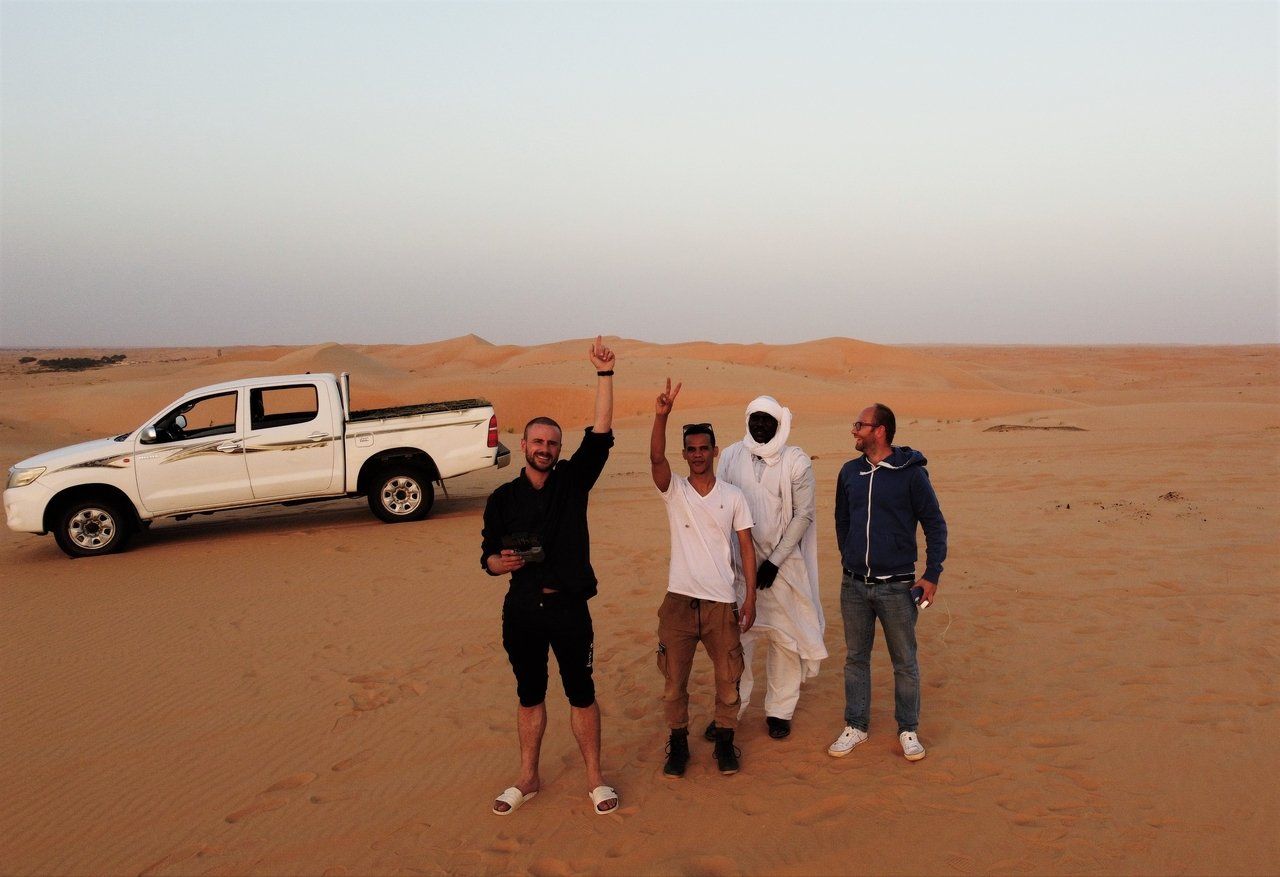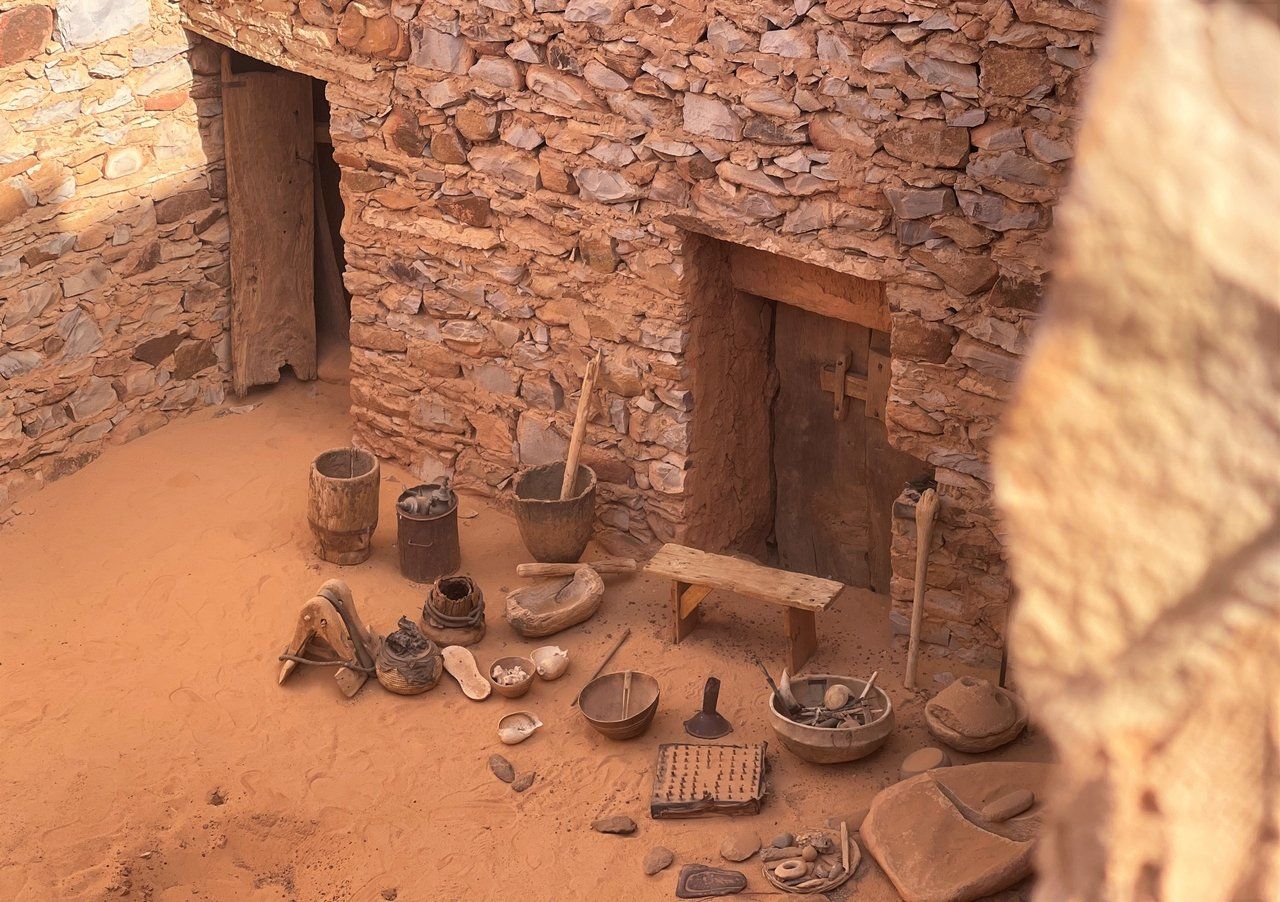Few towns in Mauritania have been as important in their history as Koumbi Saleh, located south of Timbédra. Only 35 km from the Malian border, the town belongs culturally to the historically diverse Sudan, which was the center of various African empires. As the presumed capital of the Ghana Empire, the city was embedded in the extensive network of trans-Saharan trade. With an estimated 20,000 people at one time, the town was the largest in West Africa at the time. Above all, the later invasion of the Almoravids put an end to the prosperity in the 13th century. It was not until the French excavations from 1914 that the city came back into the public eye. In today's Koumbi Saleh, apart from a few ruins, there are only village-like structures to be seen. The journey is not worthwhile for everyone. We offer Koumbi Saleh as an additional option for our two southern tours and individual tours. However, the ruins are much less impressive than Ouadane, for example, so we recommend the visit only to those who are scientifically interested. On our southern tours, we pass Timbédra on the way from Néma to Ayoun el Atrous anyway and could easily arrange a detour of several hours to one day in the direction of Koumbi Saleh with a possible overnight stay.





How many cities in Mauritania can claim to have once been the capital of a great empire? Aoudaghost, perhaps, and certainly Azougui in the meantime. Not even Oualata was granted this honor, but Koumbi Saleh was. In the fertile land of the Sudan region, which in large parts coincides with today's Sahel zone, some of Africa's advanced civilizations developed between the rivers Senegal, Niger, Shari and the White Nile. The empires of Ghana, Mali and Songhai left a deep mark on the region. Today, Koumbi Saleh, the former capital of the Ghana Empire, is part of the Hodh Ech Chargui region in Mauritania's southeast and lies on the southern edge of the Aoukar Depression.
The place was first mentioned in the 9th century. Unlike the UNESCO cities of Chinguetti and Ouadane, the foundation was not influenced by Berbers and Arabs. As the capital of the Ghana Empire (formerly Wagadu), the town probably had its heyday in the 10th to 11th centuries. However, it is undisputed that Koumbi owed its wealth primarily to its dominance in the trans-Saharan gold trade and that there were numerous contacts with Arab-Berber traders. Mosques also existed. At times, Koumbi Saleh housed up to 20,000 people, making it the largest city in West Africa. According to Arab sources, the town was divided into two parts: scholars and merchants lived in one part of town, and the Ghanaian king and his entourage lived in the other. The Arab geographer Ibn Hauqal once even wrote about the latter that he was the richest king in the world.
With the invasion of the Almoravids, the decline of the Ghanaian Empire began. Later, Sundiata Keïta was to conquer and destroy the city. Sundiate Keïta founded a new, even larger empire in West Africa - the Mali Empire. The shift in trans-Saharan trade also played its part in Koumbi's decline. Similar to its northwestern neighbor Aoudaghost, the town played no role in the Mali Empire from the 13th century onward and gradually fell into oblivion. It was not until French colonialism came in the early 20th century that archaeologists uncovered the silted ruins and rediscovered Koumbi Saleh. Today, Koumbi Saleh is the largest excavation site in all of Mauritania and, along with Aoudaghost and Azougui, is on the UNESCO Tentative List since 2001.
For today's visitors, these ruins are the main reason for the visit. The mosque, for example, which has been uncovered and now partially restored, is considered the largest of its time in all of West Africa. The column monument is also worth seeing for those interested. There is no major town nearby, but in the rainy season the landscape turns green and a tamourt forms in the immediate vicinity of the ruins. If desired, we can easily include a visit to Koumbi Saleh in one of our southern tours. We recommend a maximum stay of one day with possible overnight stay in the open.